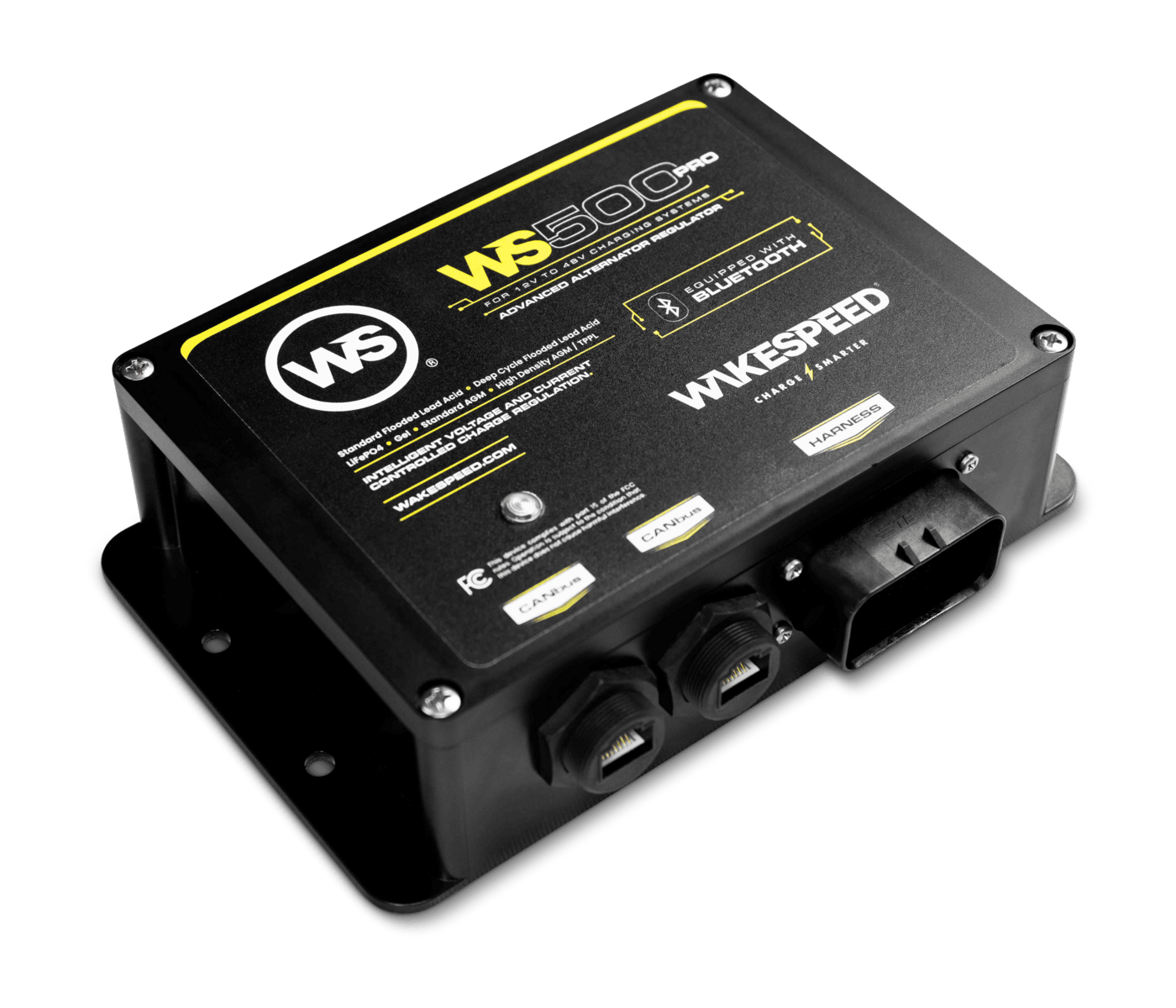
Late September
In April I hinted about a Bluetooth-enabled version of the WS500, our favourite alternator regulator, and in late June I confirmed that the WS 500 Pro had been announced, for shipment in “fall of 2024”.
That said, I always worry that products announced before they are ready to ship will be late, often horribly.
Anyway, the good news is that Al Thomason, designer of the WS500 and Pro, tells me that the new unit is on time:
- Early access production units ship next week.
- General availability is scheduled for late September, as promised.
- AAC will be receiving an early access evaluation unit soon—thanks, Al.
And further good news, I just received a notification that the Wakespeed app updated for Bluetooth is ready for early access testing on Android and iPhone (I’m on the Beta test list).
And if you just can’t wait to play with a WS500 Pro, Al himself will be at the Port Townsend Wooden Boat Festival with a bunch of fully powered-up units during the first week of September.

I wrote to Dragonfly’s sales department last week (before I saw this article) and was told “We are hoping to have it in full production and release in the next 90 days. No hard time lines available at this time. ” I’m hoping end of September rather than end of November, as I’m ready for one of these and have visitors flying in from the states in November. Let us know what you think, John, about the beta version of the app. By the way, how are your Victron SuperCycles holding up?
Hi Brian,
Ours arrives today via Fedex, and Al was pretty solid on general availability in late September, as was the product manager at Dragonfly.
I won’t have a lot to report on the app, since it’s pretty much the same as before, except with BlueTooth added.
And the SuperCycles are in their third season and still seem to be ~100% capacity, so I’m very pleased.
General question here. At what point does an alternator regulator make sense for a boat’s power system?
Our 2016 Dragonfly 32 has a Yanmar 3YM20 engine and I believe the alternator is made by Hitachi and is rated for 60 amps of output. It’s my understanding that this alternator has its own internal regulator. Our engine battery is a West Marine 55 ah, house batteries are two 90 aH Victron AGM’s, and the bowthruster/windlass battery is a 70 aH AGM.
Currently the house and bowthruster/windass battery are set up in parallel and there is a battery isolator relay that isolates the engine battery from the house/bowthruster/windlass batteries.
The engine alternator can be supplemented by a shore power AC charger that outputs 25 amps or the boat’s solar panels (three (3) at 50 watts each or 12.5 amps max). Underway or at anchor in daylight with any sun, the solar panels easily keep up with the typical loads we operate with.
We do have a change coming up that is recommended by the builder of the boat (Quorning Boats) and endorsed by Ocean Planet Engineering and that is to install a Victron 30 amp Orion DC-DC charger between the house batteries and windlass/bowthruster battery (note we purchased the Victron batteries and the Orion DC-DC charger from OPE). Their recommendation is based on better balancing the charging of the house and the bowthruster/windlass batteries. This configuration is now standard on all new Dragonfly 32’s.
Hi Bob,
I guess that depends on your usage, but I figure that a good alternator with external regulator is one of the first changes I make to any boat. It’s just too good a source of near-free power to ignore. We only use our J/109 for weekending too, but I would not dream of being without the high output alternator and WS500 I installed. This morning we left an anchorage close to home with our bank at 60%. Four miles later at our mooring it was 85%. No other source can match that. It’s also good for lead acid batteries to charge them hard. In our case .3c.
More here: https://www.morganscloud.com/2013/11/06/10-tips-to-buy-and-install-a-liveaboards-alternator/
And Eric has a good article here exploring the mix of solar and alternator: https://www.morganscloud.com/2023/01/24/balancing-battery-bank-and-solar-array-size/